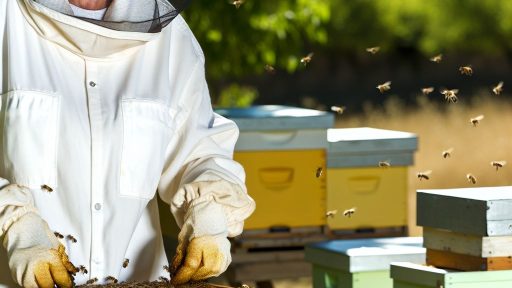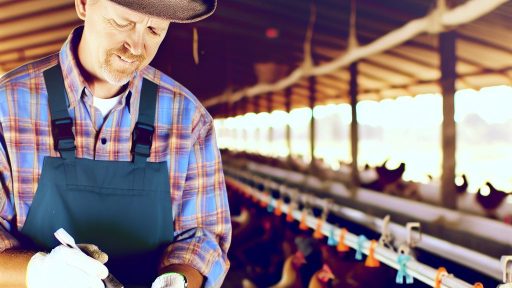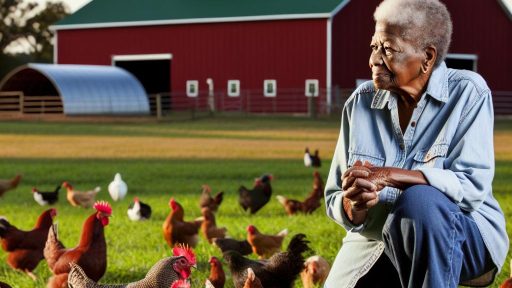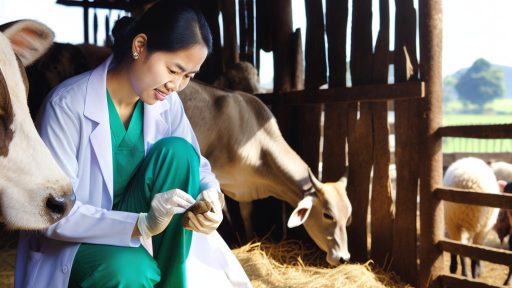Introduction to Precision Livestock Farming and its Importance
Precision livestock farming transforms traditional agricultural practices.
This approach leverages technology to enhance livestock management.
With the global population increasing, food demand rises.
Thus, efficient farming practices become critical.
Defining Precision Livestock Farming
Precision livestock farming focuses on data-driven management.
It uses sensors and technology to monitor animal health.
This method allows farmers to collect real-time data.
Ultimately, it fosters improved decision-making processes.
Benefits of Precision Livestock Farming
Enhancing animal welfare is a primary goal of precision farming.
Farmers can quickly identify health issues through monitoring.
It further leads to better quality meat and dairy products.
As a result, profitability increases for farmers.
Impact on Sustainability
Precision livestock farming promotes sustainable practices.
It reduces resource waste by optimizing feed and water usage.
Furthermore, it decreases the environmental footprint of farming.
Transform Your Agribusiness
Unlock your farm's potential with expert advice tailored to your needs. Get actionable steps that drive real results.
Get StartedFarmers actively contribute to sustainable food systems.
Challenges in Implementation
Despite its advantages, precision livestock farming faces challenges.
Initial costs for technology can be high for farmers.
Consequently, training is needed to use these advanced tools.
Moreover, data management can overwhelm some operators.
Future of Precision Livestock Farming
The trends suggest a growing adoption of precision farming techniques.
Technological advancements will continue to shape agricultural practices.
As technologies improve, costs are likely to decrease.
Thus, precision livestock farming can become accessible to more farmers.
Overview of Sensor Technology Used in Livestock Farming
Introduction to Sensor Technology
Sensor technology plays a vital role in modern livestock farming.
It enhances efficiency and productivity in agricultural operations.
Farmers now rely on sensors to monitor various aspects of animal husbandry.
Main Types of Sensors
Several types of sensors are utilized in livestock farming.
Each type serves specific purposes to improve overall farm management.
Environmental Sensors
Environmental sensors measure climate conditions in livestock facilities.
They monitor temperature, humidity, and air quality.
These metrics help maintain optimal living conditions for animals.
Health Monitoring Sensors
Health monitoring sensors track the well-being of individual animals.
Wearable devices collect data on movement and vital signs.
Farmers can identify health issues early to prevent outbreaks.
Feeding Sensors
Feeding sensors optimize the feeding process in livestock operations.
They measure feed intake and monitor dietary needs.
This technology ensures proper nutrition for livestock, enhancing growth.
Benefits of Using Sensors
Implementing sensor technology provides numerous advantages.
Showcase Your Farming Business
Publish your professional farming services profile on our blog for a one-time fee of $200 and reach a dedicated audience of farmers and agribusiness owners.
Publish Your ProfileFarmers can gather real-time data to make informed decisions.
Additionally, it enhances sustainability and reduces resource waste.
Increased Efficiency
Using sensors streamlines farm operations, resulting in productivity gains.
Automated data collection eliminates manual tasks, saving time.
Improved Animal Welfare
Sensors help ensure animals receive the best care possible.
By monitoring health and living conditions, livestock thrive.
Cost-Effectiveness
Investing in sensor technology can lead to long-term savings.
Higher efficiency reduces costs related to labor and feed.
Future of Sensor Technology in Livestock Farming
The role of sensors in livestock farming will continue to expand.
Emerging technologies like AI will enhance data analysis capabilities.
Farmers will adapt quickly to changes, driving innovation in agriculture.
Types of Sensors
Wearable Sensors
Wearable sensors play a crucial role in precision livestock farming.
They monitor the health and behavior of individual animals.
These sensors can track metrics like heart rate and activity levels.
Farmers can use real-time data to make informed decisions.
For instance, abnormal behavior may indicate illness or distress.
Also, wearable sensors can assist in detecting estrus in breeding animals.
This technology enhances breeding efficiency and overall herd management.
Environmental Sensors
Environmental sensors measure various factors within the livestock environment.
They assess temperature, humidity, and air quality in animal housing.
Farmers can maintain optimal conditions for livestock wellbeing.
These sensors also detect waste levels, helping in waste management.
Additionally, specific sensors can monitor feed and water intake.
This data helps farmers ensure optimal resource utilization.
Consequently, environmental sensors significantly aid in overall farm management.
Uncover the Details: Essential Housing Requirements for Comfortable Swine Rearing
How Sensors Collect and Analyze Data in Real-Time
Introduction to Sensor Technology
Sensors play a crucial role in precision livestock farming.
They gather data on various animal parameters.
Moreover, these devices help farmers make informed decisions.
Types of Sensors Used
- Wearable sensors monitor animal health and activity.
- Environmental sensors track climate and habitat conditions.
- Feed sensors measure and analyze dietary intake.
Data Collection Processes
Sensors continuously gather data from livestock.
They use technologies like GPS or RFID for tracking.
In addition, sensors can detect physiological changes.
This includes monitoring heart rate, temperature, and movement.
Real-Time Data Transmission
Collected data is often transmitted in real-time.
Sensors utilize wireless networks for efficient communication.
This instant relay enables quick adjustments on the farm.
Data Analysis for Improved Farming
Once transmitted, data undergoes analysis.
Farm managers can visualize key metrics through dashboards.
These insights lead to improved decision-making processes.
Additionally, predictive analytics helps in forecasting outcomes.
Showcase Your Farming Business
Publish your professional farming services profile on our blog for a one-time fee of $200 and reach a dedicated audience of farmers and agribusiness owners.
Publish Your ProfileBenefits of Sensor Integration
- Enhanced herd management improves animal welfare.
- Increased productivity leads to higher profits for farmers.
- Real-time insights help reduce resource consumption.
Challenges in Sensor Implementation
Despite their benefits, integrating sensors poses challenges.
Cost can be a significant barrier for many producers.
Moreover, technical expertise is often required for setup.
Finally, data security and privacy must be considered.
Learn More: Ensuring Animal Welfare In Organic Livestock Operations And Management
The Role of Sensors in Health Monitoring of Livestock
Importance of Health Monitoring
Health monitoring is critical for livestock management.
It helps farmers maintain animal welfare and productivity.
Additionally, early detection of health issues can reduce losses.
Types of Sensors Used
Various sensors play vital roles in livestock health monitoring.
Wearable sensors track vital signs and movement.
Examples include heart rate monitors and accelerometers.
Environmental sensors monitor temperature and humidity levels.
These sensors help identify potential health risks in barns.
Data Collection and Analysis
Sensors collect data on livestock health continuously.
This data can include heart rate, temperature, and activity levels.
Real-time analysis helps farmers make informed decisions.
Farmers can use software to identify trends over time.
Benefits of Sensor Technology
Sensor technology improves the accuracy of health monitoring.
It provides timely alerts for health abnormalities.
Moreover, it allows for personalized care for each animal.
This technology can significantly enhance livestock productivity.
Case Studies in Precision Livestock Farming
Many farms successfully implement sensor technology.
An example is GreenPastures Farm in Iowa.
The farm uses sensors to monitor cattle health closely.
They report improved overall herd health and reduced veterinary costs.
Another case is FreshDairy Farms, which monitors dairy cows.
They’ve improved milk yield by tracking animal activity and health.
You Might Also Like: Optimizing Pasture Rotation For Sustainable Grass-Fed Cattle Feed Efficiency
Enhancing Feed Efficiency through Sensor Data
The Importance of Feed Efficiency
Feed efficiency plays a crucial role in livestock productivity.
Improving feed efficiency reduces costs for farmers.
It also supports healthier animal growth and development.
Consequently, effective management of feed resources is essential.
How Sensors Contribute to Feed Efficiency
Sensors provide real-time data on animal behavior and health.
This data allows farmers to tailor feeding strategies effectively.
Moreover, sensors can monitor individual animal performance.
As a result, farmers can identify underperforming animals quickly.
Types of Sensors Used in Precision Livestock Farming
Various types of sensors enhance feed efficiency.
- Weight sensors measure animal weight regularly.
- Temperature sensors track the health of each animal.
- Wearable sensors monitor activity levels and feeding patterns.
Utilizing Sensor Data for Decision-Making
Farmers can use sensor data to make informed decisions.
For instance, analyzing feeding patterns identifies ideal feed types.
Furthermore, data analysis helps adjust feeding schedules.
Showcase Your Farming Business
Publish your professional farming services profile on our blog for a one-time fee of $200 and reach a dedicated audience of farmers and agribusiness owners.
Publish Your ProfileUltimately, this approach leads to optimal feed utilization.
Success Stories in the Use of Sensor Technology
Farmers have reported significant improvements through sensor use.
Case studies reveal increased growth rates and lower feed costs.
Additionally, farmers like Emily Roberts have embraced this technology.
She noted a 15% reduction in feed costs after implementing sensors.
Future of Sensors in Livestock Farming
The future holds immense potential for sensor technology.
Innovations will continue to enhance feed efficiency.
As technology advances, sensors will become more precise.
Farmers will benefit from even more detailed data insights.
See Related Content: Improving Animal Welfare Through Ethical Feed And Housing Practices In America
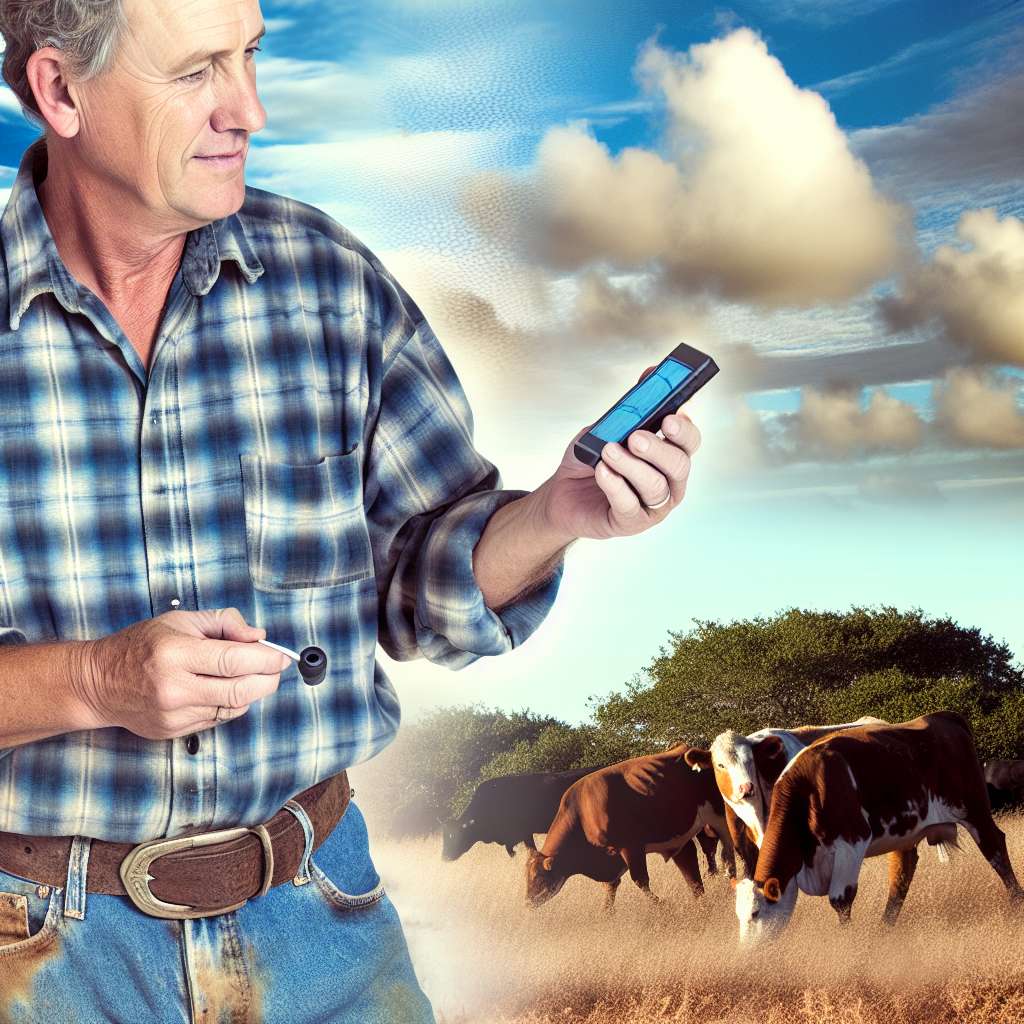
Sensors and their Impact on Animal Welfare and Behavior Tracking
Introduction to Sensors in Livestock Farming
Sensors are revolutionizing livestock farming today.
They improve animal welfare and enhance behavior tracking.
Farmers can gather real-time data effortlessly.
This data can inform better management decisions.
Types of Sensors Used
Many different types of sensors are available for livestock farming.
Wearable sensors monitor health and well-being.
Environmental sensors track temperature and humidity levels.
Motion sensors help observe animal movements and behavior.
Each type has a unique role in improving animal care.
Impact on Animal Welfare
Sensors greatly enhance animal welfare standards.
They provide insights into animal health and comfort.
Farmers can identify stress signals more quickly.
This early detection allows for prompt intervention.
Additionally, improving living conditions becomes much easier.
Behavior Tracking Advantages
Behavior tracking offers significant insights into animal activities.
It helps understand social interactions within herds.
Farmers can observe feeding habits and sleeping patterns.
Additionally, identifying any abnormal behaviors becomes possible.
This knowledge allows for better herd management strategies.
Case Studies and Success Stories
Several farms have successfully implemented sensors.
Green Valley Farms reported increased milk production.
Similarly, Oak Ridge Ranch reduced animal stress levels.
These examples illustrate the practical benefits of sensor technology.
The Future of Sensors in Livestock Farming
The future looks promising for sensors in farming.
As technology advances, we can expect more innovations.
Integration with artificial intelligence may provide deeper insights.
This will enable farmers to make data-driven decisions.
Ultimately, sensors will continue to enhance animal welfare.
Integration of Sensors with IoT for Smart Farming Solutions
Overview of Sensor Technology
Sensor technology plays a vital role in modern agriculture.
These devices monitor various environmental and animal health parameters.
Showcase Your Farming Business
Publish your professional farming services profile on our blog for a one-time fee of $200 and reach a dedicated audience of farmers and agribusiness owners.
Publish Your ProfileThrough sensors, farmers can collect real-time data effectively.
This data guides decision-making and enhances productivity.
Types of Sensors in Livestock Farming
There are several types of sensors used in livestock farming.
- Temperature sensors help maintain optimal living conditions.
- GPS tracking devices monitor animal movement.
- Health monitoring sensors track vital signs of livestock.
- Weight sensors provide data on animal growth and feed efficiency.
Role of IoT in Data Integration
The Internet of Things (IoT) connects various sensors and devices.
This connectivity enables farmers to access data from anywhere.
IoT platforms aggregate data for better analysis and management.
Furthermore, IoT enhances the responsiveness of farming operations.
Benefits of Integrating Sensors with IoT
Integrating sensors with IoT provides numerous advantages.
- It increases efficiency through automated monitoring systems.
- Farmers can predict health issues before they escalate.
- Data-driven insights improve resource management.
- It allows for precise feeding and care tailored to each animal.
Challenges of Sensor and IoT Integration
Despite its benefits, several challenges exist in integration.
High initial costs may deter some farmers.
Additionally, reliable internet connectivity is crucial for success.
Data security and privacy concerns also pose risks.
Future of Sensor-Integrated Smart Farming
The future of farming relies heavily on technology advancements.
As the technology matures, costs are expected to decrease.
More farmers will adopt sensors and IoT solutions over time.
Ultimately, this integration will lead to sustainable farming practices.
Challenges and Limitations of Implementing Sensor Technology in Livestock Farming
High Initial Costs
Investing in sensor technology requires significant upfront capital.
This cost may discourage small-scale farmers from adopting the technology.
Furthermore, ongoing maintenance can add to overall expenses.
Technical Complexity
Implementing sensor technology involves complex systems.
Farmers often need training to properly use these systems.
Additionally, troubleshooting can be challenging without technical support.
Data Management Issues
Collecting a large volume of data can overwhelm farmers.
They may struggle to analyze this data effectively.
Consequently, important insights might be overlooked.
Limited Connectivity
Many rural areas have poor internet connectivity.
This limitation hinders the real-time functionality of sensors.
Farmers need reliable internet access for optimal performance.
Animal Welfare Concerns
Some farmers worry that sensors may disrupt animal behavior.
Animals may react negatively to unfamiliar devices.
Understanding these impacts is essential for successful implementation.
Integration with Existing Systems
Farmers often have existing management systems in place.
Integrating new sensors with these systems can be difficult.
Compatibility issues may arise during this process.
Additional Resources
Twelve Threats of Precision Livestock Farming (PLF) for … – Frontiers
Precision Agriculture: Benefits and Challenges for Technology …

